Are you familiar with the blackcurrant?
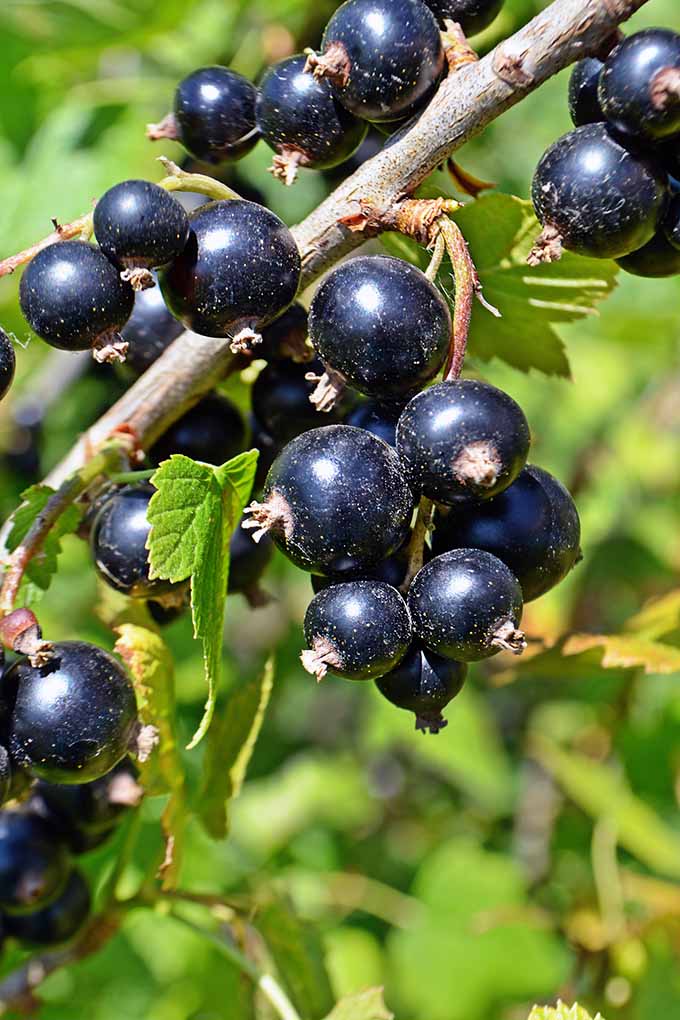
Tiny, with a sweet/tart taste, these delightful, dark berries are overflowing with nutrients and antioxidants.
For those in the US, this piquant berry may not be all that familiar as it was a “forbidden fruit” in the States for half of the twentieth century – but once again, it is becoming readily available.
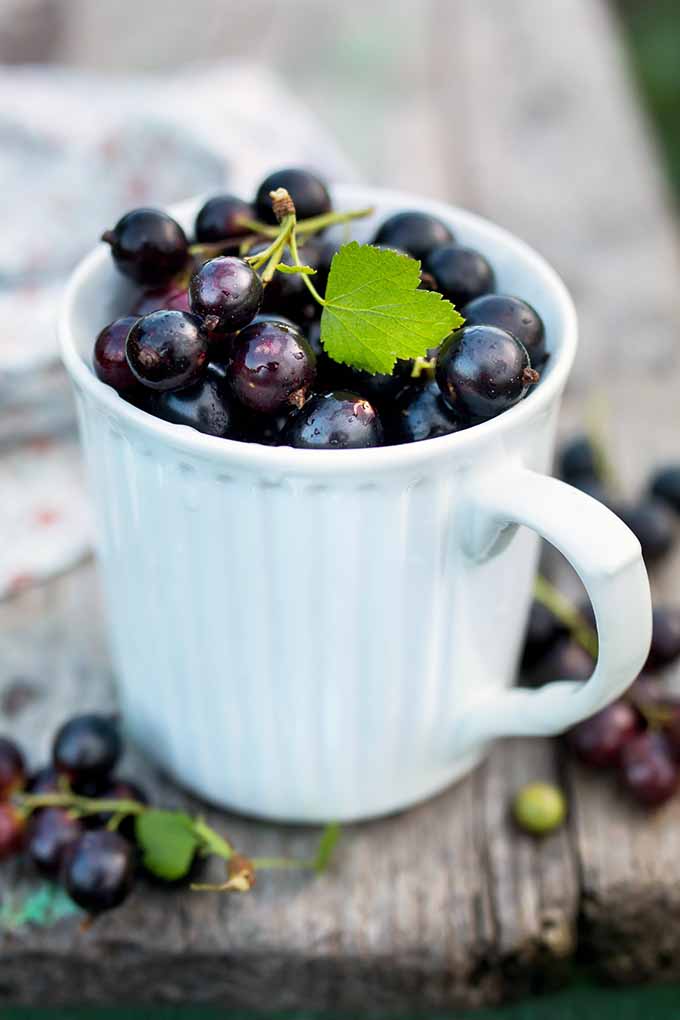
Readers from the UK, Canada, New Zealand, and Europe are typically more conversant with this bountiful superfood.
This fruit can be eaten raw, but due to the tart, astringent flavor it is usually cooked with a sweetener such as sugar, stevia, or honey.
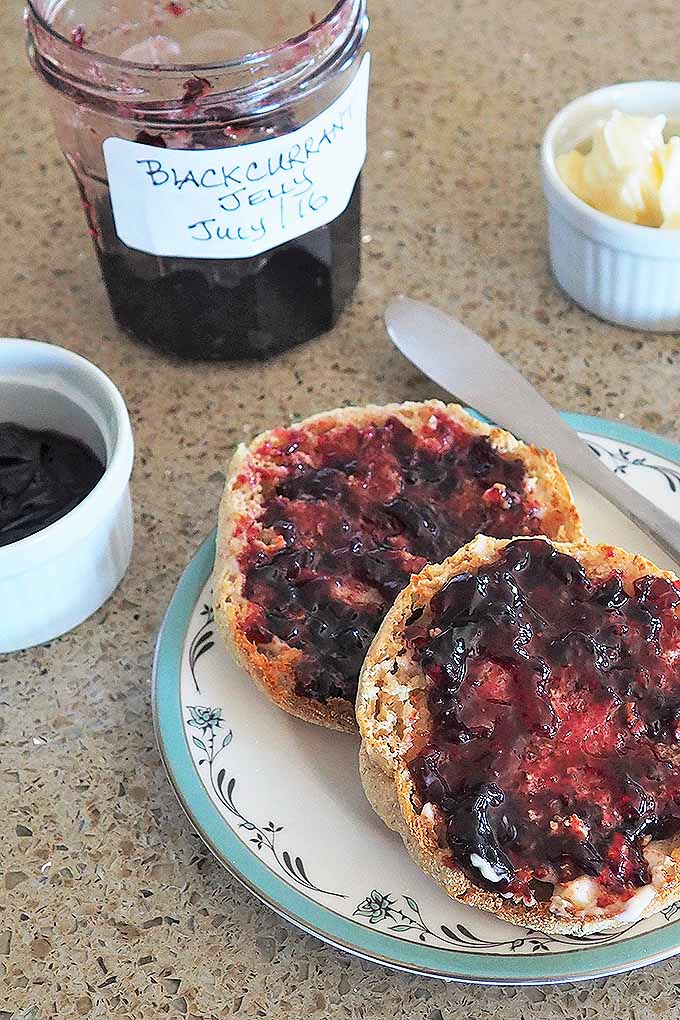
Jams, jellies, juice, desserts, and savory sauces are all suitable culinary uses for this bold berry.
Let’s have a peek at the blackcurrant family and why it was forbidden, delve into the nutritional values of the fruit, and then touch on few methods to prepare these delightful amethyst jewels.
The Ribes Tribe
The blackcurrant, Ribes nigrum, belongs to the Ribes genus in the Grossulariaceae family. It is a small, woody shrub native to the temperate regions of Europe and northern Asia.
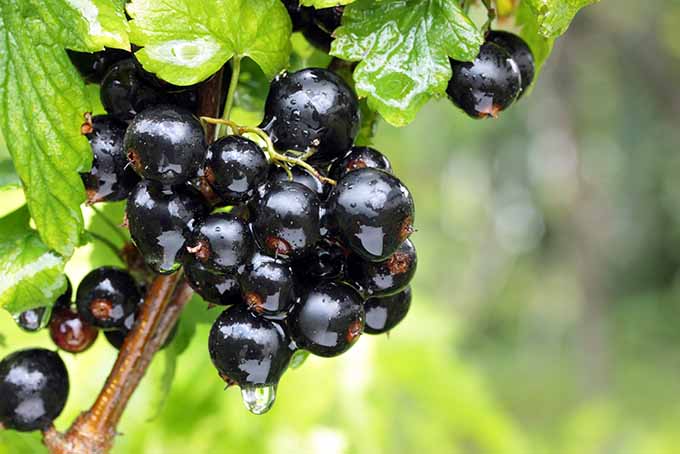
Close cousins include white and redcurrants, as well as gooseberries. The lighter colored currants do offer a sweeter taste, but are also substantially lower in nutrients and polyphenols.
Many gardeners will recognize an ornamental family member, R. sanguineum, which puts on a show of juicy pink blossoms in the early spring garden.
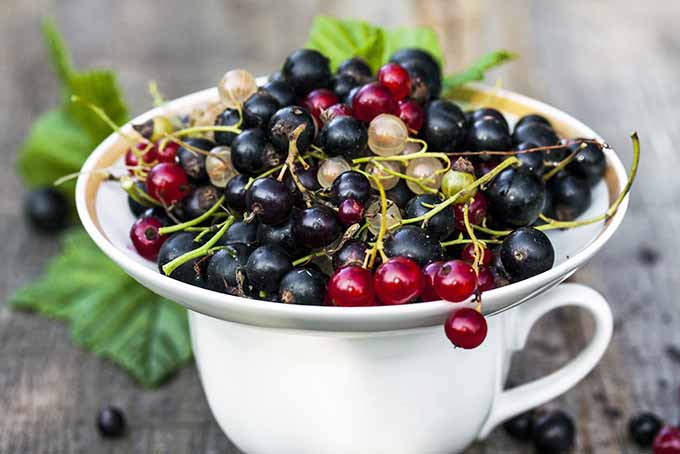
For the home garden, Ribes varieties need winter cold to blossom and set fruit. The “Ben” series developed in Scotland are the premier cultivars for disease resistance and abundant fruit yields.
Thanks to their outstanding nutritional profile, these berries have long been used for their curative properties in traditional Chinese and European folk medicines.
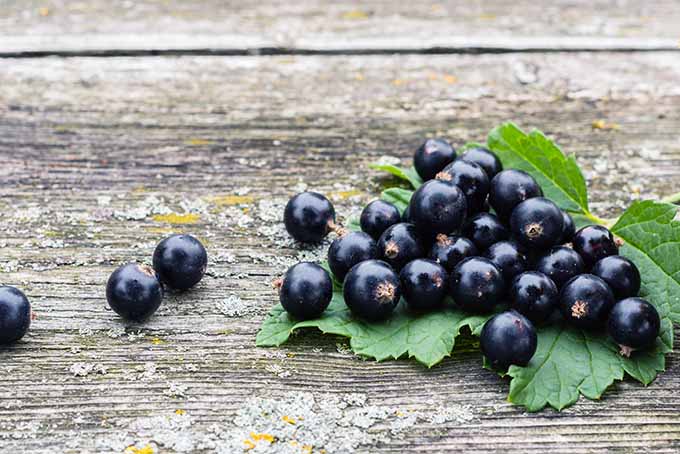
And a wild variety native to North America called R. hudsonianum has a history of use by indigenous peoples for medicinal applications as well.
In addition to culinary and holistic uses, the berries and leaves are used as a dye – the berries produce a blue or violet color, while the leaves give a yellow hue.
Nutritional Values
These deep purple berries are an excellent source of vitamin C, and a one-cup serving contains 338 percent of Recommended Daily Values for a 2000 calorie per day diet.
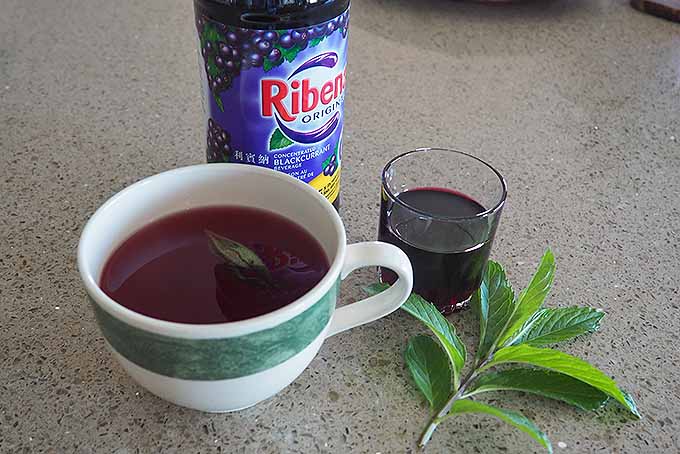
According to a list of the 100 richest foods for polyphenols and antioxidants on the Phenol Explorer database, blackcurrants come in at #17 overall. And the only fruits that rank higher are black chokeberries, black elderberries, and lowbush (a.k.a. “wild”) blueberries.
They also provide good levels of iron, potassium, and manganese, and contribute some B vitamins as well.
Anthocyanins give the berries their deep, rich color. This is one of the compounds that makes them particularly powerful as a source of antioxidants.
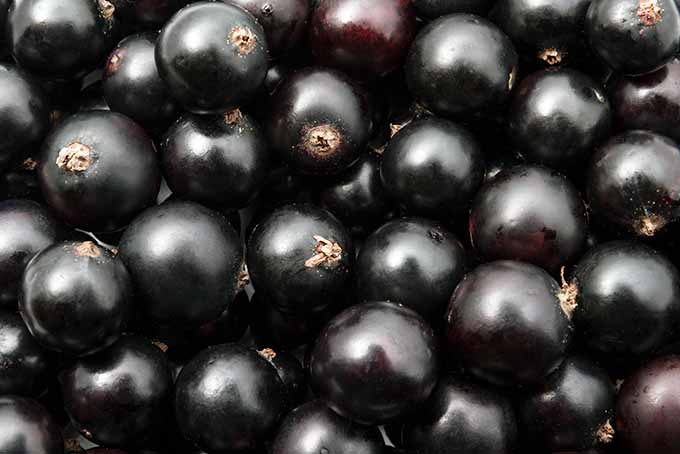
These important flavonoids scavenge harmful free radicals, and aid heart health, as they’re known to reduce bad (LDL) cholesterol and improve blood vessel function.
Laboratory studies on mice have found an extract of the fruit may help to regulate weight gain and improve insulin resistance, as well as reduce the markers for chronic inflammation.
The oil derived from their seeds is also a good source of gamma-linolenic acid (GLA). GLA is an omega-6 fatty acid that’s important for brain function, as well as normal growth and development.
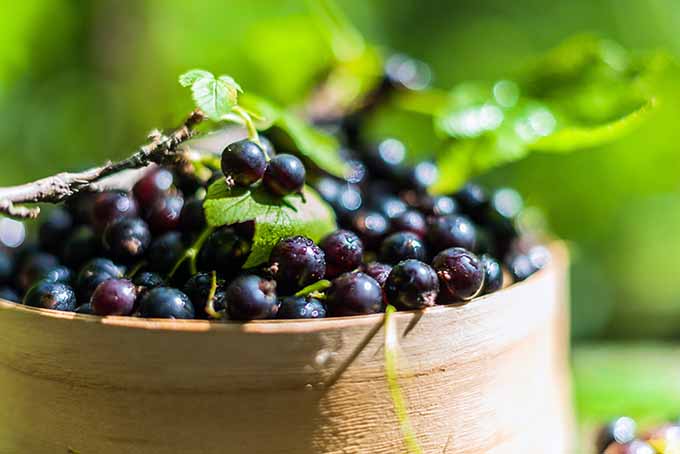
In the UK during World War II, food rationing resulted in a severe shortage of fruits rich in vitamin C. As blackcurrants have outstanding levels of C and grow well in the British climate, cultivation was encouraged to provide a local source of this important nutrient.
Once production was increased, cordial made from the juice was distributed free to toddlers for the duration of wartime shortages, to ensure their good health.
The Forbidden Fruit
Prior to the start of the 20th century, blackcurrants were widely enjoyed throughout the US. But why did they disappear?
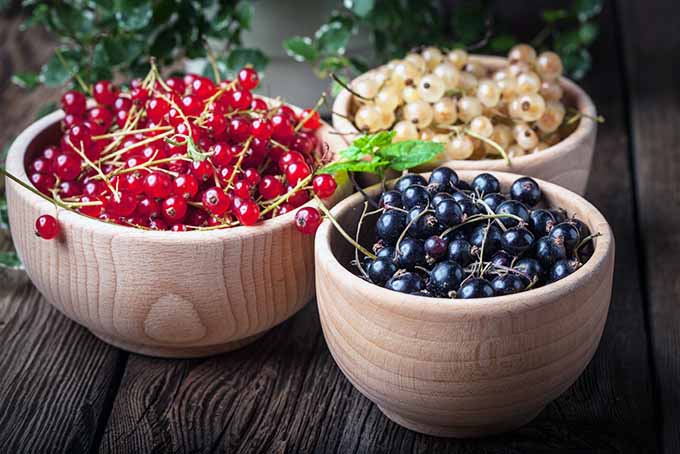
In 1911, the federal government banned their commercial growth as R. nigrum plants were believed to be a vector host of white pine blister rust. This pest came from white pines imported from Europe, which had caused some harm to the burgeoning US lumber industry.
Throughout the time of the ban, its efficacy was questionable as other cultivars, including those indigenous to North America, also act as an intermediate host to the rust.
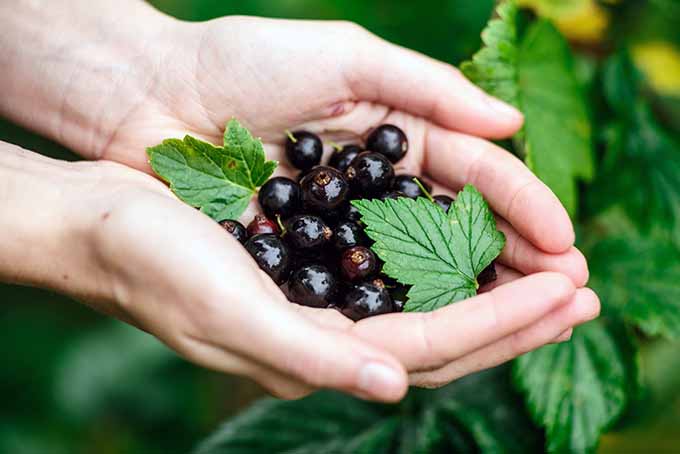
With the development of new disease-resistant varieties, in 1966 the feds transferred responsibility for lifting the ban to individual states.
As a result, commercial currant growth is enjoying a comeback in Connecticut, New York, Oregon, and Vermont with consumer products once again available in the US marketplace – although some statewide bans are still in existence today.
The Recipe Book
Blackcurrant shrubs were a staple in my parents’ garden, and I enjoyed many sticky handfuls straight from the branch. But their flavor really shines when cooked, in both sweet and savory dishes.
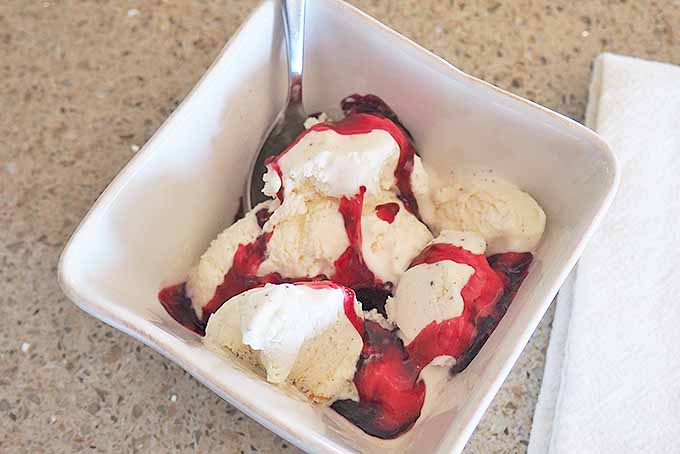
Make a simple sauce by warming berries in a pot with a bit of water and sugar just until they burst, then drizzle over ice cream and fresh fruit, like sliced mango or peaches, or on a banana split. Decadently delicious!
For baked desserts, it’s hard to beat these little berries. Tarts or bumbleberry crumble (with blackberries and raspberries) are delectable, as is blackcurrant cheesecake. And they’re equally good in muffins and scones.
Blackcurrant sorbet, ice cream, or frozen yogurt is a mid-summer must for the ice cream maker.
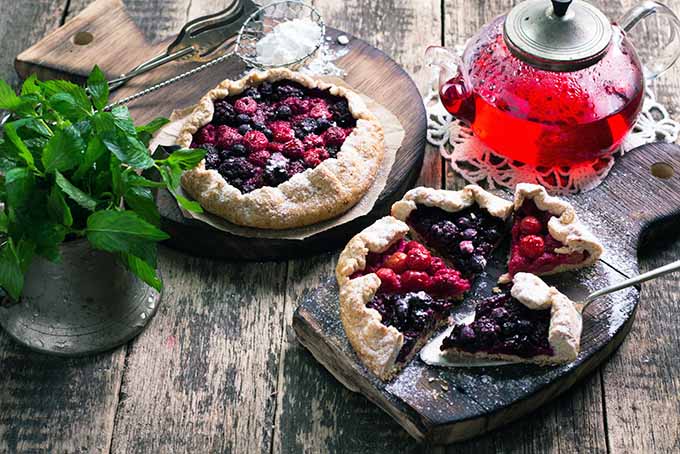
For a mouth-watering treat, make a coulis with the fresh fruit and drizzle generously over anything chocolate – your taste buds will never be the same!
With high levels of pectin, they make a wonderful, sweetly tart jelly that you will want to slather thickly on toasted English muffins or crumpets.
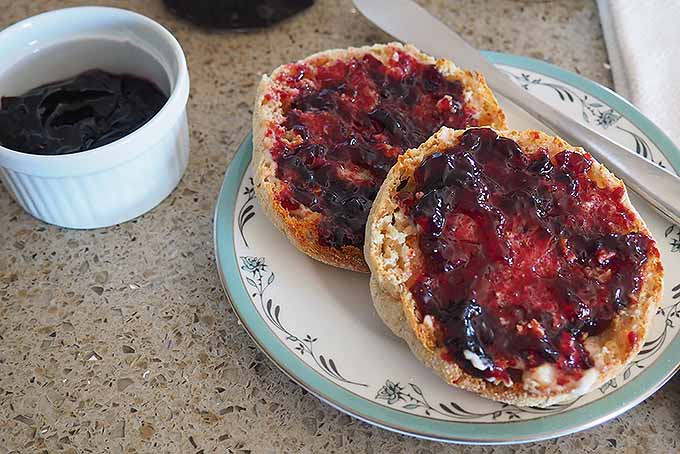
For savory dishes – such as lamb, poultry, game, or fish – blackcurrants make a piquant fruit sauce. Mix the fresh fruit and a couple of tablespoons of currant jelly with some grated beets, fresh herbs, a pat of butter, some chicken stock, and a shot of Canadian whiskey – delightful!
They also make a sharp accent to tropical fruit salads, or can be tossed with tomato and mint for a refreshing side salad.
And of course, don’t forget the beverages.

Few things are as soothing (or loaded with vitamin C) as a hot drink of cordial with a teaspoon of honey when you’re feeling under the weather.
For a bright, refreshing summer spritzer, mix the cordial with sparkling water and serve over ice. And the berries, juice, or cordial make great additions to a smoothie as well.
In the UK, the Brits often mix a shot of cordial with hard cider for a drink known as “cider and black,” or with stout for a “black and black.”
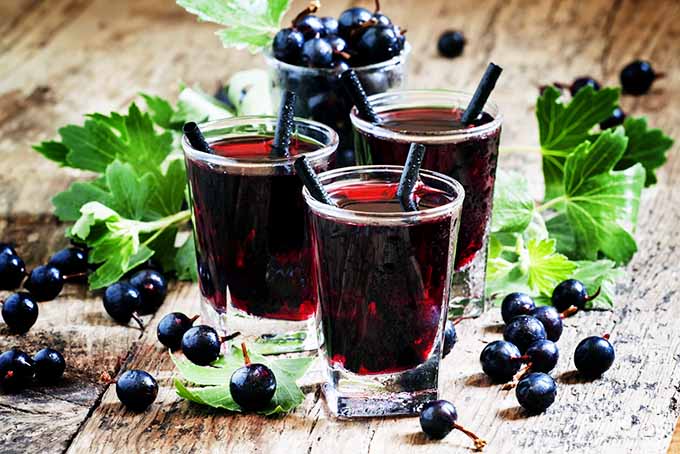
Blackcurrants are the main ingredient in the sweetly sippable Burgundy liqueur, creme de cassis – which can be mixed with white wine to make a Kir, or with champagne for a Kir Royale.
You can also make your own liqueur with a bottle of vodka and 2 cups of white sugar.
Just place the berries in a bowl, prick the berries with a fork and layer on the sugar, add the vodka, then cover and leave for two weeks. When the time is up, strain and decant into decorative bottles.
Selection And Storage
Select blackcurrants that are firm and dark purple or black in color with a clear, slightly glossy skin.
Remove stems and calyx tips, then rinse under cool running water.
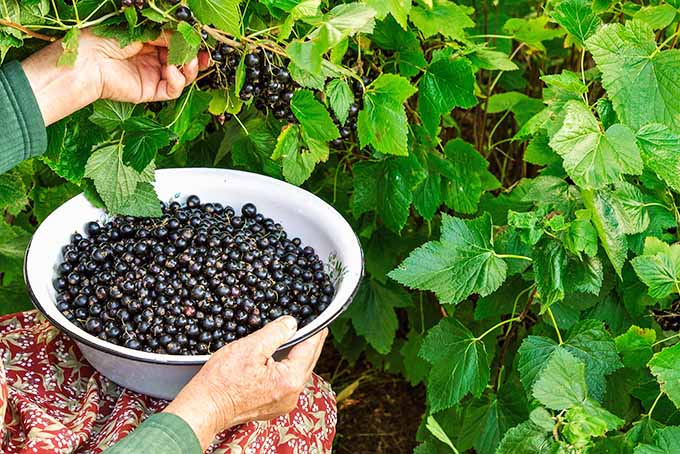
If not used immediately, berries will last in the fridge for 2-3 weeks.
To freeze, clean, rinse, and pat dry (or give them a whirl in a salad spinner), then lay in a single layer on a cookie sheet. Once frozen, transfer to freezer bags or containers and remove excess air.
The Bottom Line
As the old saying goes, good things come in small packages. And that is certainly true of the blackcurrant.
Bold in taste and bursting with healthy nutrients, these little berries are unrivaled for their outstanding levels of vitamin C and other powerful antioxidants.
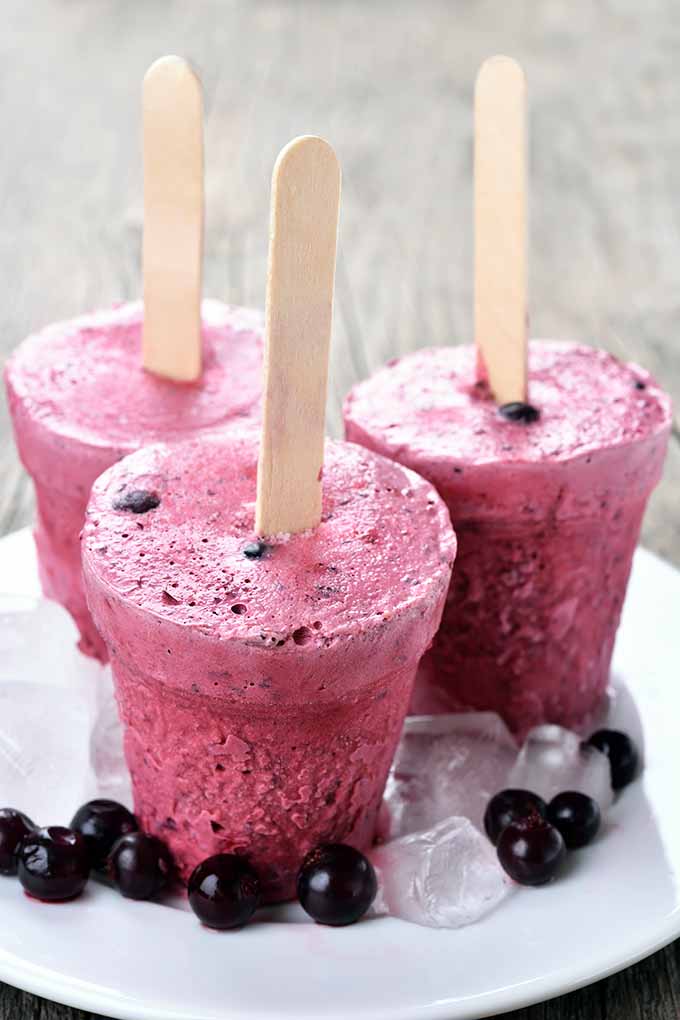
Buy them fresh in midsummer and add a bit of sugar for sweet desserts, make a zesty jelly, or create a piquant savory sauce for fish, poultry, and meat.
And don’t forget the juice – its tangy taste is out of this world!
How about you folks – any uses for blackcurrants you’d like to share? Drop us a line in the comments section below!
Don’t forget to Pin It!
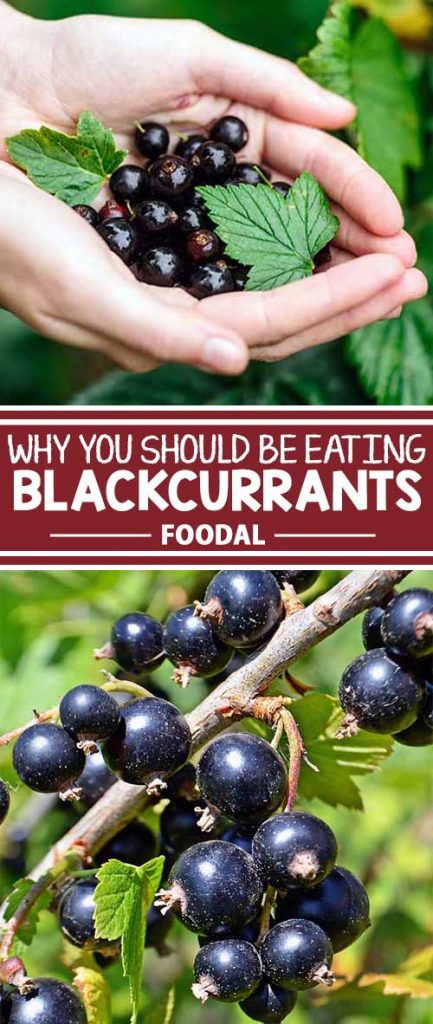
Photos by Lorna Kring, © Ask the Experts, LLC. ALL RIGHTS RESERVED. See our TOS for more details. Uncredited photos: Shutterstock.
The staff at Foodal are not medical professionals and this article should not be construed as medical advice. Foodal and Ask the Experts, LLC assume no liability for the use or misuse of the material presented above. Always consult with a medical professional before changing your diet, or using supplements or manufactured or natural medications.
About Lorna Kring
Recently retired as a costume specialist in the TV and film industry, Lorna now enjoys blogging on contemporary lifestyle themes. A bit daft about the garden, she’s particularly obsessed with organic tomatoes and herbs, and delights in breaking bread with family and friends.




Hi, I am from Eastern part of Europe. For some unexplained reason I have a craving for blackcurrant berries. Have them always in my freezer and use with my oatmeal every morning. Also, like St. Dalfour Deluxe Spread Black Currant.
Wild black currants, as well as goose berries and red currants grow in abundance in Newfoundland .